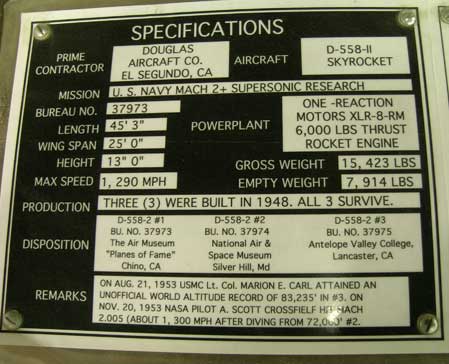
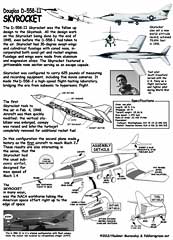
Douglas-Skyrocket - $$7.50
The Douglas D-558-2 Skyrocket was a rocket and jet-powered supersonic research aircraft. On 20 November 1953, shortly before the 50th anniversary of powered flight, Scott Crossfield piloted the Skyrocket to Mach 2, or more than 1,290 mph the first time an aircraft had exceeded twice the speed of sound. Comes with an adorable Rocket Man cutout
D-558 Douglas-Skyrocket
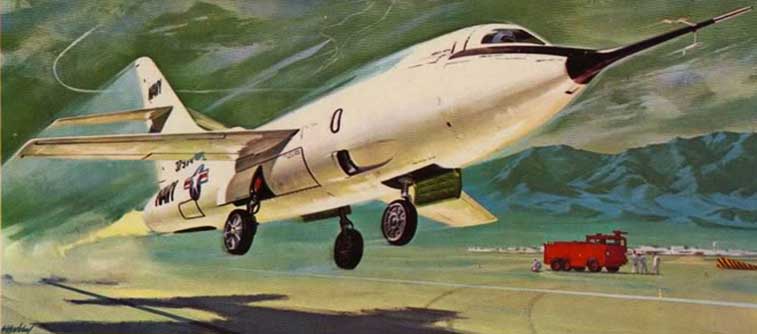 |
The Douglas D-558-2 Skyrocket (D-558-II) was a rocket AND a jet-powered supersonic research aircraft built by Douglas for the United States Navy. On November 20th 1953, just before the 50th anniversary of the Wright Brother's powered flight, Scott Crossfield piloted the Skyrocket to Mach 2 (more than 1,290 mph!!) which was the first time an aircraft had exceeded twice the speed of sound. |
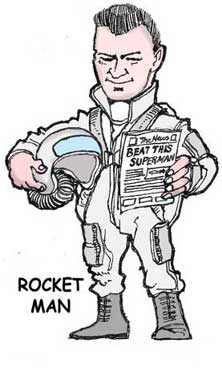 The "-2" in the aircraft's designation referred to the fact that the Skyrocket was the phase-two version of what had originally been conceived as a three-phase program. The phase-one aircraft, the D-558-1 or Skystreak, was jet powered and had straight wings. The third phase, which eventually was cancelled, would have involved constructing a mock-up of a combat type aircraft using the results from the testing of the phase one and two aircraft. The eventual D-558-3 design, which was never built, was for a hypersonic aircraft similar to the North American X-15. When it became obvious that the D558-1 fuselage could not be
The "-2" in the aircraft's designation referred to the fact that the Skyrocket was the phase-two version of what had originally been conceived as a three-phase program. The phase-one aircraft, the D-558-1 or Skystreak, was jet powered and had straight wings. The third phase, which eventually was cancelled, would have involved constructing a mock-up of a combat type aircraft using the results from the testing of the phase one and two aircraft. The eventual D-558-3 design, which was never built, was for a hypersonic aircraft similar to the North American X-15. When it became obvious that the D558-1 fuselage could not be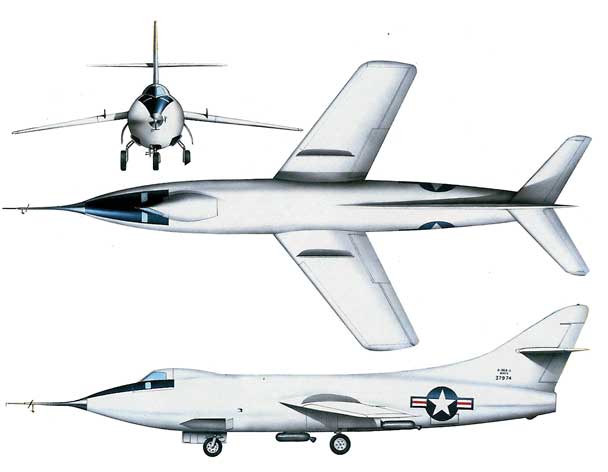 modified to accommodate both rocket and jet power, the D558-2 was conceived as an entirely different aircraft.
modified to accommodate both rocket and jet power, the D558-2 was conceived as an entirely different aircraft.
This Skyrocket featured wings with a 35-degree sweep and horizontal stabilizers with 40-degree sweep. The wings and tail were made of aluminum and the fuselage was of, primarily, magnesium construction. The Skyrocket was powered by a Westinghouse J34-40 turbojet engine fed through side intakes in the forward fuselage. This engine was intended for takeoff, climb and landing.
For high speed flight, a four-chamber Reaction Motors LR8-RM-6 engine used in the Bell X-1, was fitted. This engine was rated at 6,000 lbf static thrust at sea level. A total of 250 US gallons of aviation fuel, 195 US gallons of alcohol, and 180 US gallons of liquid oxygen were carried in fuselage tanks.
The D-558 Skyrocket was originally configured with a flush cockpit canopy, but visibility from the cockpit was poor, so it was re-configured with a raised cockpit with conventional angled windows much like the skystreak. This resulted in a greater profile area at the front of the aircraft, which was balanced by an additional 14 inches of height added to the vertical stabilizer. Like its predecessor, the D558-1, the D558-2 was designed so that the forward fuselage, including cockpit, could be separated from the rest of the aircraft in an emergency. Once the forward fuselage had decelerated sufficiently, the pilot would then be able to escape from the cockpit by parachute.
| SPECIFICATIONS |
| Wingspan: 25 ft Length: 42 ft Height: 12 ft 8 in Weight, launch: 15,787 lb Weight, landing: 9,421 lb Top speed: 1,291 mph Engine: Reaction Motors Inc., XLR-8-RM-6 (6,000 lb thrust) |
Douglas pilot John F. Martin made the first flight at Muroc Army Airfield (later renamed Edwards Air Force Base) in California on 4 February 1948 in an aircraft equipped only with the jet engine. The goals of the program were to investigate the characteristics of swept-wing aircraft at transonic and supersonic speeds with particular attention to pitch-up (un-commanded rotation of the nose of the aircraft upwards), a problem prevalent in high-speed service aircraft of that era, particularly at low speeds during takeoff and landing, and in tight turns.
The three aircraft gathered a great deal of data about pitch-up and the coupling of lateral (yaw) and longitudinal (pitch) motions; wing and tail loads, lift, drag and buffeting characteristics of swept-wing aircraft at transonic and supersonic speeds; and the effects of the rocket exhaust plume on lateral dynamic stability throughout the speed range. (Plume effects were a new experience for aircraft.) The number three aircraft also gathered information about the effects of external stores (bomb shapes, drop tanks) upon the aircraft's behavior in the transonic region (roughly 0.7 to 1.3 times the speed of sound).
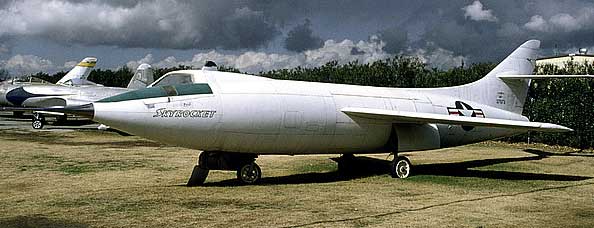 This Skyrocket is waiting for a place of honor in a museum |
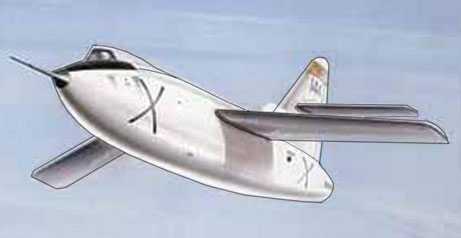 Skyrocket flying low over the desert with kisses on it |
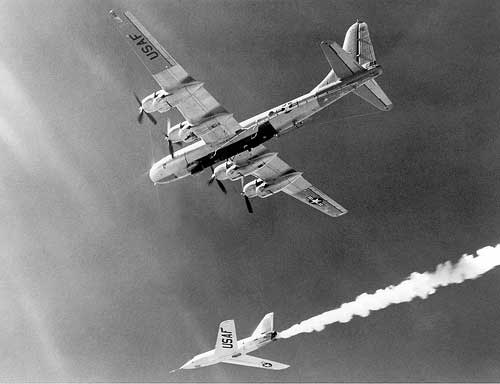 The B-29 Launching Ship and the Bell X-2 |
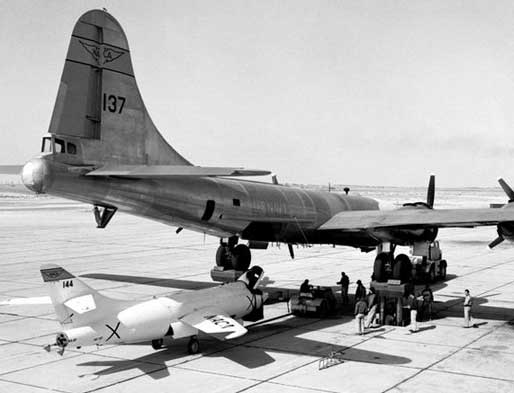 Douglas D-558 Skyrocket being loaded to a B-29 launch plane |
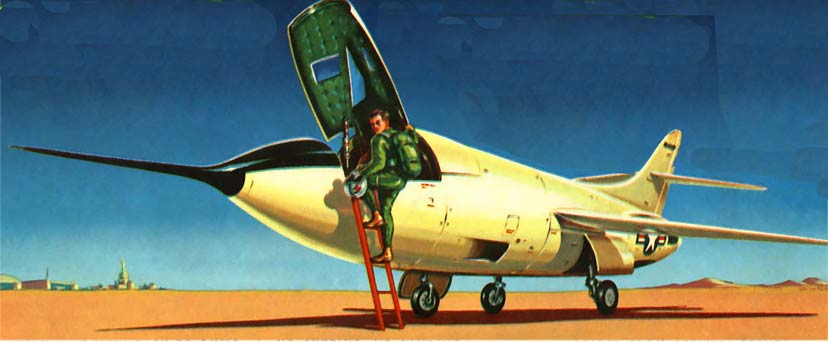 Scott Crossfield and the Douglas Skyrocket. Smile Scott !! |
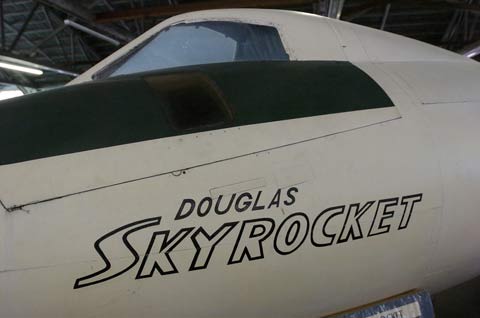 Close up of the Douglas PR Logo on the Skyrocket. It looks like it was done hastily with a black magic marker |
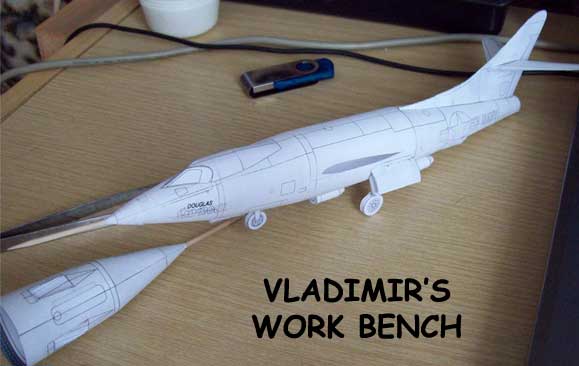 The designer, Vladimir's work table |
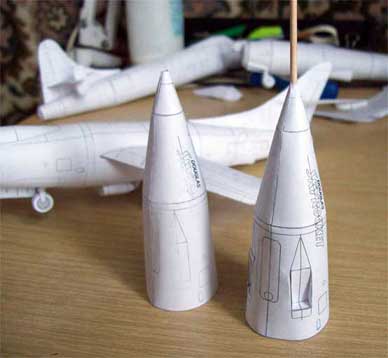 Some more of Vladimir's development work |
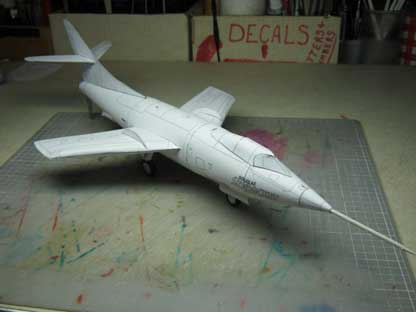 |
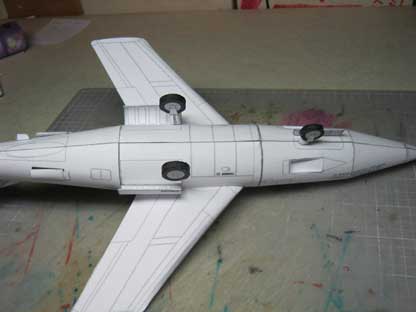 Skyrockets were used in flight tests from 1948 to 1956 at what is now Edwards Air Force Base. |
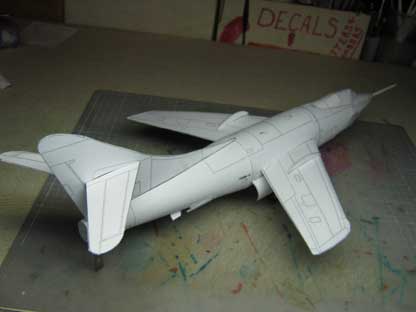 |
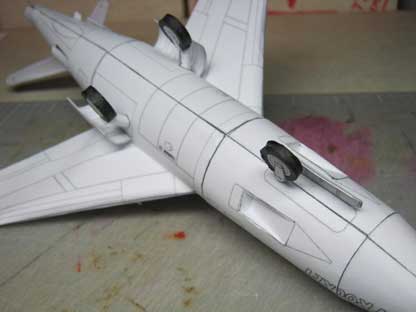 |
Bob Martin did a 'beta build' of the Douglas Skyrocket and sent these photos along.. Everything worked very well as you see. Next it went back to Vladimir for coloring and the addition of markings. The model is a soft cream color. A new model design usually takes at least a month to complete. |
|
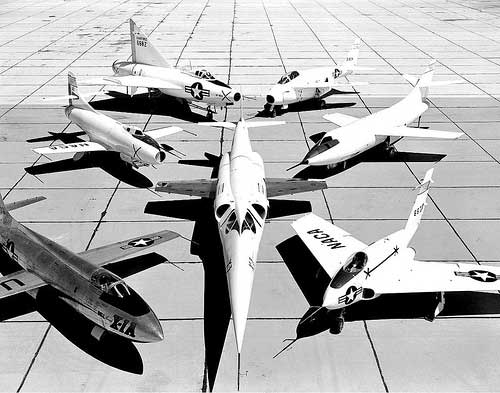 |
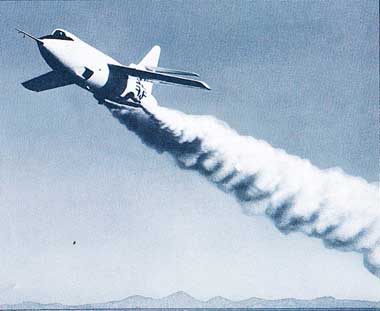 Using its powerful rocket motor, the Skyrocket could be ground launched unlike the next-to-come Bell X-1 which could only be air launched. |
| The Douglas Skyrocket and other early research airplanes aided in the design of the century series of fighter airplanes, all of which featured the movable horizontal stabilizers first employed on the X-1 and D-558 series. | Designers were drawn to the rocket launched concept because of the high level bomber threat in the 1950s..but none ever entered service |
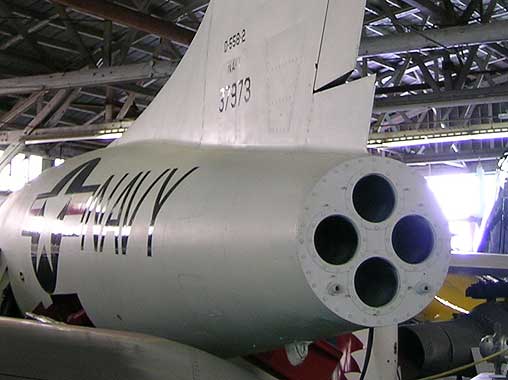 |
There are only three Skyrockets in existence. One at Antelope Valley College, NACA 145, flew 87 missions. Another Skyrocket is in the in the Smithsonian Institution’s National Air and Space MuseumWashington, D.C. and the third is at the Planes of Fame Museum in Chino, Calif. The Skyrocket carries the National Advisory Committee for Aeronauthics (NACA) insignia. NACA was the predecessor to the National Aeronautics and Space Administration.



